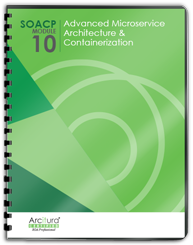Microservice and Containerization Patterns > Interchange Patterns > Autonomous Proxy Service
Autonomous Proxy Service (Erl, Naserpour)
How can decomposed microservices become accessible to established service consumers?

Problem
Solution
Application
A service proxy is positioned between the service consumers and the newly created microservices. The service proxy preserves the original API, thereby allowing the service consumers to interface with it. The service proxy contains the necessary logic to interact with the new microservices in order to provide the original logic and data back to the service consumers.

A service proxy deployed in a container relays service consumer requests to Microservices A, B and C.
Multiple instances of the proxy can be deployed and load balanced, with each proxy instance deployed in its own container and load balanced, as explained in the complete pattern description.
This pattern is covered in Module 10: Advanced Microservice Architecture & Containerization..
For more information regarding microservice and containerization courses and accreditation,
visit the Microservice Architect Certification program page..
